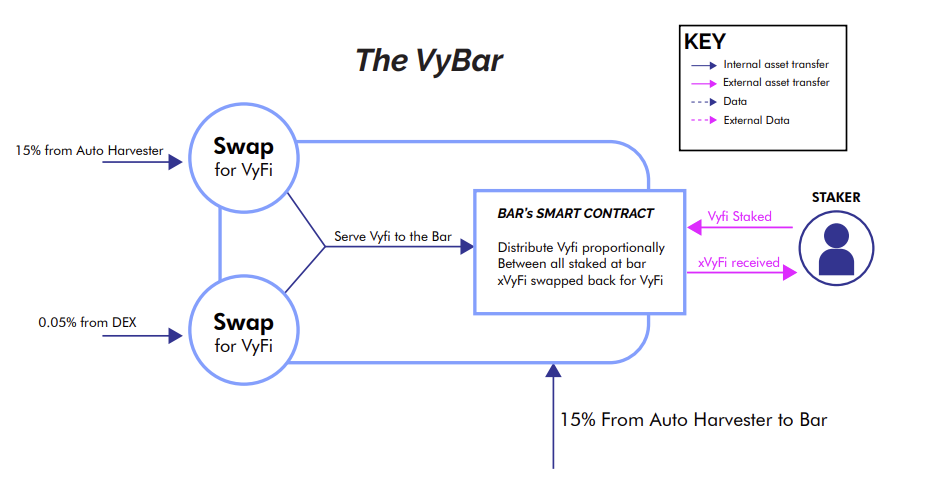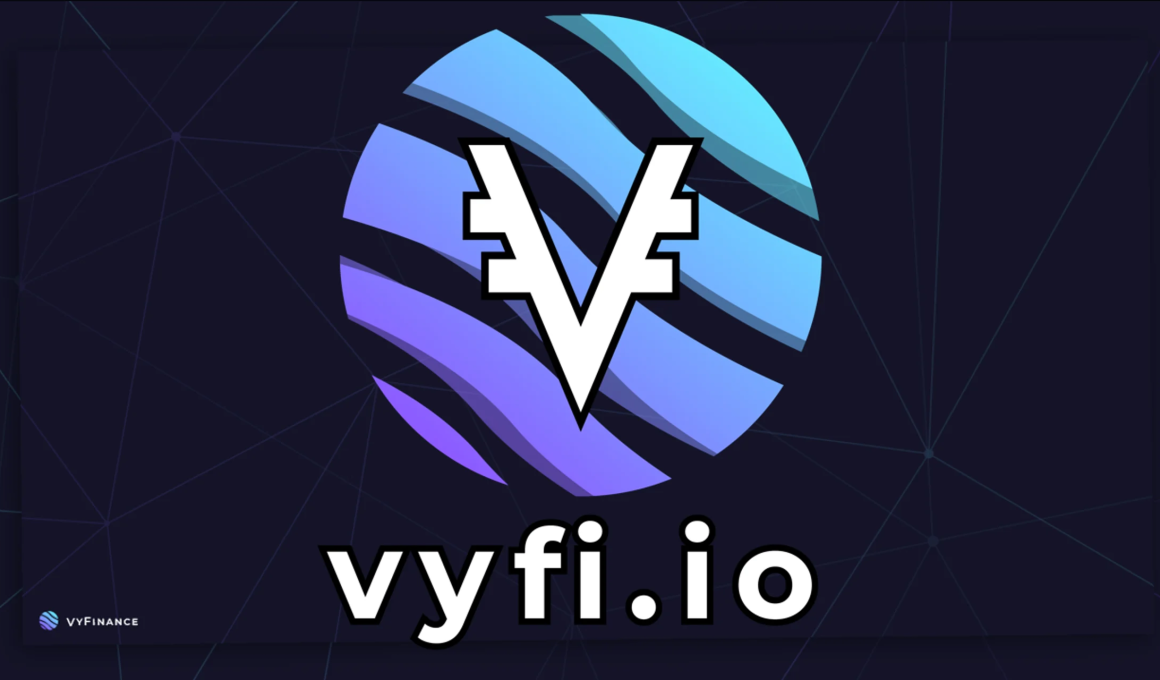In the ever-evolving landscape of decentralized finance (DeFi), it’s becoming increasingly apparent that the sector is laden with a variety of challenges. Some of these obstacles are inherent to the DeFi space itself, while others are more particular to platforms such as Cardano, an emerging smart blockchain with a substantial amount of value currently locked in its native token, ADA.
One of the most significant challenges within DeFi is the steep learning curve. This obstacle is twofold: it involves both the degree of trust a user places in a particular DeFi platform, and the technical proficiency required to navigate these platforms. For those taking their first steps into DeFi, the sector’s complex operations can be intimidating. Jargon such as “Impermanent Loss,” although routine for experienced DeFi participants, can dissuade newcomers from delving into this innovative financial realm.
In addition, the issue of transparency, or lack thereof, concerning the teams spearheading DeFi projects is a mounting concern. The concept of smart contracts operating anonymously might seem attractive in theory, but it often paves the way for fraudulent schemes in practice. Newcomers to the platform frequently find themselves in unknown territory with scant information about the tokenomics, functionality, and distribution methods of the platforms they engage with.
Switching focus to Cardano, this platform aspires to introduce cryptocurrencies to unbanked populations, with a particular emphasis on Africa and Asia. However, this laudable mission introduces a unique set of challenges.
Consider an average Nigerian citizen who has embraced ADA, managed to accumulate a significant amount, and is eager to explore the opportunities this new digital currency presents. Once they’ve established a wallet, their subsequent step would likely involve researching liquidity pools and lending protocols to uncover the best farming options within the Cardano ecosystem. But, with no previous experience in finance, much less DeFi, understanding and maneuvering through this intricate space can be an insurmountable task.
This lack of familiarity with the financial system renders these new users susceptible to scams and informational barriers, which can lead to substantial losses due to simple misunderstandings or mechanical errors. While these systems are revolutionary, they are also complex and carry inherent risks, particularly for individuals who are not aware of these risks.
The solution?
Enter VyFinance, a Cardano Native Token (CNT) designed for DeFi applications. Recognizing the problems plaguing DeFi and the Cardano ecosystem, VyFinance aims to establish a more user-friendly DeFi platform that caters to both new and experienced users. Their approach incorporates an Auto-Harvester that manages the user interface and profit-sharing mechanism, making it easier for users to navigate and understand the platform.
In an industry fraught with jargon and complex mechanisms, VyFinance promises a solution that allows new users to easily comprehend and learn the terminology, while giving intermediate and advanced users the desired level of control. To tackle the issue of transparency, VyFinance is backed by a real-world operation, an Australian proprietary firm, reinforcing trust in the platform.
With an innovative integration of a Neural Net into a liquidity aggregator, or Auto Harvester, VyFinance offers a unique functionality in the DeFi space. The Neural Net utilizes ARIMA and other metrics to measure the risk of pools, impermanent loss, and momentum, all with the goal of identifying the best yield farms for Auto-Harvesting. This allows new users to approach DeFi in a structured manner, where they are introduced to the risks involved one by one.
VyFinance plans to address these issues and lower the barriers to entry, enabling newcomers to engage with DeFi step-by-step. Their plan also includes educational material for users wanting to learn and advance, and the provision for a more advanced version of the site for those ready to tackle more complex tools and opportunities. This approach to educating and gradually introducing users to the intricacies of DeFi is a significant step in reducing the challenges.
The Vecosystem

VyFinance operates through a distinct ecosystem, comprising four interconnected elements facilitated by smart contracts: the International Markets (auto-harvester), yield farms and liquidity pools (VyFi), the off-shore bank, and the VyFi Bar (distribution mechanism). These elements are all marketed under the catchy phrase “Crypto Holiday,” using real-world analogies to make the ecosystem more digestible for newcomers.
The International Markets, or auto-harvester, is a smart contract that oversees yield farming and liquidity pool investing across multiple platforms. Users deposit their Cardano into the platform and gain access to a comprehensive dashboard displaying investment locations, current portfolio value, and pending harvests. The auto-harvester disburses rewards weekly, with 20% of all earnings shared with the VyFi Bar.
The VyFi Bar is a pool of funds gathered from various sources. Users enter the Bar by staking their VyFi and receive an ownership token for the VyFi Bar, called xVyFi. The value of xVyFi increases over time due to the income streams feeding the Bar, including 15% of all farm from the auto-harvester, 15% of the income from VyFinance’s proprietary trading firm, and 0.05% of all exchanges conducted on the DEX.
Education is a fundamental component of VyFinance’s philosophy, with the belief that DeFi is built to revolutionize the world. This is exemplified by giving users access to an educational learning management system (LMS) that provides guidance on how to engage with DeFi products safely, along with introductory crypto market management education. Access to the LMS is currently planned for users staked at the auto-harvester (holders of the auto-harvesters LP token).
VyFinance also incorporates a governance protocol, empowering VyFi holders with voting rights on any changes to the protocol or the Vecosystem. This includes technical changes (to smart contracts, DApp function, etc.) and directional changes (focusing on improving certain aspects or trying to implement new features). This governance protocol is managed through Snapshot, enabling users to contribute proposals for voting.
Finally, the off-shore bank, which is a part of the stage 2 release as per VyFinance’s timeline, is a lending platform. It will allow users to borrow different coins against margin, powered by the liquidity pools from VyFinance. A percentage of all fees earned at the bank will be shared with the VyFi Bar. This layered approach to DeFi, combining farming, staking, education, governance, and lending, is designed to onboard new users to DeFi, and foster a community that can safely navigate this complex space.
With the launch of their mainnet on the 15th of may lets dive deeper into some of the features that are now live!
The Bar

The VyFi Bar is an innovative feature that allows users to stake their VyFi tokens and earn a share of the transaction fees generated across the VyFi ecosystem. This is a first-of-its-kind redistributive mechanism launched on Cardano.
Here’s how it works:
- Transaction Fees and the Bar: For every transaction on the VyFi DEX, a fee of 0.3% is charged. Out of this, 0.2% goes back to the liquidity providers, and 0.1% is directed to the VyFi Bar. This 0.1% is essentially fees collected to buy VyFi from the market and distribute it among users who have staked their VyFi to the Bar.
- Embedded Liquidity Pools (ELPs): ELPs are built into every liquidity pool on the VyFi dApp. They collect the 0.1% fee from every transaction and forward these fees to the Bar when the ‘Serve’ operation is executed.
- Principal Tokens and Fee Conversion: For any trading pair, the creator of the pair decides which token will be the Principal Token (PT). When the ‘Serve’ operation is executed, all fees are converted into the PT and sent to the next ADA linked pair. This process continues until the fees reach an ADA/VyFi pair.
- VyFi Linked ELPs: VyFi linked ELPs behave differently. Since VyFi can be directly ‘served’ to the Bar, it is always the PT. When the ‘Serve’ operation is executed, all fees are converted to VyFi and sent directly to the Bar to be distributed among stakers.
- Engaging with the Bar: Users can stake their VyFi at the Bar and receive xVyFi in return. xVyFi represents your share of all VyFi held in the Bar. When you withdraw VyFi from the Bar, the xVyFi used for the transaction is destroyed, and you receive your initial deposit plus any earned VyFi.
- Value of xVyFi: xVyFi’s value is determined by the total amount of VyFi in the Bar divided by the sum of all minted xVyFi. Each time VyFi enters the Bar from any source other than a user deposit, no new xVyFi is minted. Thus, as more VyFi enters the Bar, the value of xVyFi increases.
For users, all they need to do is go to the VyFi app, stake their VyFi into the Bar, and receive their xVyFi in return. Users can track the ratio between VyFi and xVyFi and other statistics on the Bar’s dashboard. An additional feature planned is an xVyFi/ADA liquidity pool, allowing users to trade directly from ADA to xVyFi without staking to the Bar, further simplifying user engagement.
Whats the purpose of the Bar
The VyFi Bar serves as a unique mechanism for redistributing value within the VyFi ecosystem. It’s designed to incentivize users to stake their VyFi tokens by offering them a share of the transaction fees generated across the system.
Here are the main objectives of the VyFi Bar:
- Rewards for Staking: The Bar provides a tangible incentive for users to stake their VyFi tokens. Users who stake their VyFi tokens in the Bar receive xVyFi tokens in return, and these xVyFi tokens represent their share of the total VyFi held in the Bar. This means that the more VyFi a user stakes, the more they can potentially earn from transaction fees.
- Redistributing Transaction Fees: Every transaction on the VyFi DEX incurs a fee, a portion of which is channeled to the Bar. This fee is then converted into VyFi tokens and distributed among the users who have staked their VyFi in the Bar. This redistribution of fees serves as a reward for participation in the ecosystem.
- Incentivizing User Engagement: By offering potential rewards through the redistribution of transaction fees, the Bar encourages users to engage more actively with the VyFi ecosystem. This could lead to an increase in the overall usage of the platform, further driving the growth of the ecosystem.
- Enhancing Token Value: The Bar mechanism helps enhance the value of VyFi tokens. As more fees are collected and converted into VyFi tokens, and as more VyFi tokens are staked into the Bar, the value of VyFi and xVyFi tokens can potentially increase over time.
L2-LP’s
VyFinance introduces a novel feature known as Layer Two Liquidity Pools (L2-LPs). This is built on the concept of Layer One Liquidity Pools (L1-LPs), which are the standard liquidity pools in a decentralized exchange (DEX) where users supply two types of tokens to facilitate trading between them.
What are L2-LPs?
When users provide liquidity to the L1-LP, they receive L1-LP tokens in their wallets. These tokens are proof of their participation in the L1-LP and allow them to earn rewards or “farm”. VyFinance offers users the ability to pair their L1-LP tokens with another cryptocurrency (like $ADA) to create a second layer liquidity pool, referred to as an L2-LP. This allows users to earn additional rewards.
How does it work?
L2-LP tokens receive the same rewards as the original L1-LP tokens, plus an additional bonus for providing liquidity to the L1-LP market. This creates a secondary marketplace for L1-LP tokens, making it easier for users to access farming. Users can simply trade another cryptocurrency for an LP token and start earning rewards instantly, without needing to supply liquidity themselves.
Benefits for Traders:
The creation of L2-LPs allows for a market price to develop for the L1-LP tokens, which can fluctuate based on buying and selling pressures. This price fluctuation can create arbitrage opportunities. Traders can potentially profit from the price difference between creating (or “minting”) new LP tokens and buying or selling existing LP tokens on the DEX.
Benefits for Liquidity Providers:
There are two main benefits for liquidity providers who participate in L2-LPs:
- Risk Hedging: L2-LPs can help mitigate a phenomenon known as “impermanent loss”, which can occur when the value of the tokens in a liquidity pool changes. By pairing their L1-LP tokens with another cryptocurrency to create an L2-LP, liquidity providers can earn more LP tokens if the value of their L1-LP tokens decrease, effectively reducing their losses.
- Increased Rewards: Participants in L2-LPs not only receive the farming rewards from the original L1-LPs but also an extra 10% boost. This allows users to earn more rewards while potentially reducing their portfolio’s risk.
In summary, L2-LPs in VyFinance provide a way to enhance user rewards, reduce risk, and create additional trading opportunities. It brings a layer of complexity but also greater utility to liquidity provision in the DEX environment.
I asked Steven, the CEO about the future, challanges and regulation to do with Vy.
- Current Challenges: The primary challenge for VyFinance at present is attracting liquidity. The DeFi scene on Cardano is still developing and overall liquidity is limited. Therefore, the team is focusing on building this liquidity both within the community and specifically on their platform.
- Future Goals: In the coming months, VyFinance plans to launch an Auto-Harvester following the rollout of their DEx and BAR. This feature aims to simplify user interaction with multiple liquidity pools by only requiring ADA deposits. This will make liquidity mining on Cardano more accessible to users.
- Unique Features: VyFinance distinguishes itself from other DeFi platforms with a few unique features including their BAR (a distributive mechanism), stakeless LP farming, and Layer Two Liquidity Pools. These tools provide traders with diverse engagement options, new arbitrage opportunities, enhanced impermanent risk management capacity, and simplified onboarding for newcomers.
- Team Experience: The VyFinance team has a collective experience of 18 years in the crypto space. The CEO, with a background in hedge fund trading in bond markets, has been managing private investment portfolios in DeFi since 2020.
- Regulation: VyFinance, being an Australian company, operates under the regulatory purview of the Australian Securities and Investments Commission (ASIC). The team works closely with advisors to ensure regulatory compliance. They recognize the rapid changes in this field and are committed to adhering to regulations to sustain their business.
- Security and Compliance: VyFinance has conducted an audit and plans to continuously audit their software as it evolves. They maintain a close relationship with their auditors (Obsidian Systems) and also hire independent white-hat hackers to test the robustness of their system before each launch. This continuous process ensures that the platform remains secure and compliant with regulatory requirements.
Check out the live platform here










